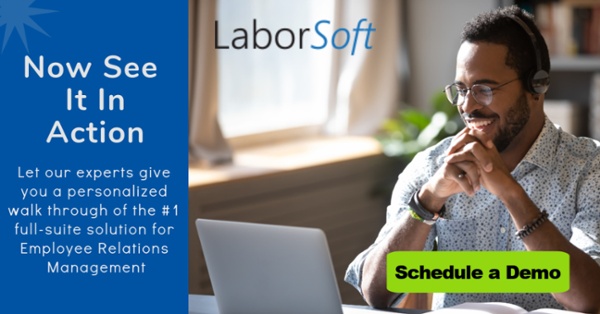Managing the Union Grievance Process without All the Headaches
Read Time 4 mins | Nov 19, 2023 | Written by: Frankie Kourtis

In HR, we know that workplace complaints are commonplace and there are routine in-house protocols to follow when navigating and filing them properly. However, managing the union grievance process is a whole different ballgame.
If you’ve dealt with unions before or are a union shop, you know that there are many levels and representatives to deal with and a lot of requisite information to gather. If you are concerned that a union may be targeting your company or your industry, it's important to familiarize yourself with each aspect of this complex process ahead of time. When handling a grievance, it is vital to have all of your proverbial ducks in a row because mishandling the union grievance process can have a ripple of repercussions like no other.
Get a Grasp on the Union Grievance Process
 A grievance is a claim made by an employee or group of employees that an adverse effect has resulted due to a misinterpreted or violated company policy. In order to address a grievance, HR needs to have a finite grievance procedure, or internal dispute resolution protocol, in the first place. Not adhering to the protocol could prove disastrous for the employer and may increase the probability of claims of discrimination or favoritism, and in turn, corporate liability.
A grievance is a claim made by an employee or group of employees that an adverse effect has resulted due to a misinterpreted or violated company policy. In order to address a grievance, HR needs to have a finite grievance procedure, or internal dispute resolution protocol, in the first place. Not adhering to the protocol could prove disastrous for the employer and may increase the probability of claims of discrimination or favoritism, and in turn, corporate liability.
When an employee grievance is brought to the employee’s or the group of employees’ supervisors, it should be taken seriously and submitted by HR in writing in a timely manner. Before it gets filed or recorded, it is a good idea for the supervisor and union representative(s) to both review it first to render a determination if the claim is valid. The grievance form must generally be submitted quickly since there may be a specific timeframe outlined in the bargaining agreement in which the grievance must be filed.
Failure to stick to the outlined timeframe could lead to exacerbating the claimant(s) and/or the union if the company drags its feet. If it's determined at this stage that the employee grievance is valid, the next step could be mediation — hopefully leading towards a resolution. Even if one cannot been reached, a clearly defined grievance process helps with proceeding to each next step.
Beware of Bargaining Agreements & Overcome the Hierarchy Hurdle
You need to take special precautions if a grievance procedure is part of a collective bargaining agreement, because there will be additional protocols to follow when filing, reviewing, and resolving them. If procedures are described in a CBA, that specific and unique process takes precedence. However, if you are looking for an example of how such a union protocol might look, here is a typical four-level heirarchy of steps a CBA could call for, in order, as you attempt to find a resolution:
1. INITIAL RESOLUTION TALKS: The first step in the protocol is to include the employee(s) involved, any union representation, and employee(s)’ supervisors during the initial grievance filing.
2. ESCALATED TALKS: Then, the process will escalate to the next level of supervisors and union representative(s), minus the complainant(s) who are not included once the review process begins.
3. INTERVENTION: If a resolution has still not been attained after the second step, the protocol would advance to an intervention level, which would involve a higher echelon of management and a union steward or regional/national union representative if need be.
4. ARBITRATION: If this still does not lead to an agreement, some procedures or bargaining agreements contain a provision for an outside arbitrator to be hired to help mediate with the union representatives and leaders from the employer’s organization.
Just remember that if the discrete steps in a collective bargaining agreement are not followed throughout the course of a union grievance process, your company may find itself grieving for much more than just a settlement or liability. Keeping paperwork organized, all parties on the same page, and communication prompt are all top priorities as you proceed through this process.
Case management software from LaborSoft is one an integral solution for keeping your business in business. Our employee relations analytics, case management workflows, and our central repository of documentation streamlines case management to mitigate risk of operational bottlenecks, costly lawsuits, and legal ramifications stemming from HR issues and complaints. This sensitive data requires that maximum security protocols are in place and that your information is protected at all times.
Contact us for a customized demonstration and learn how LaborSoft can help you improve communications, build a more collaborative, safe, and supportive workplace, while reducing the likelihood of costly litigation.


